7+ Reasons Not To Get a Mill Kitchen Bin Subscription
Another electric “composter” and even more reasons to roll my eyes at it… If you’ve been thinking about getting a Mill subscription, hit pause. There are probably other composting options better than a Mill membership that will save you money and be better for the planet. For most people, the Mill subscription is not a great food waste “solution.”
Looking for a better electric compost bin? I’ve tried several electric kitchen bins, and this one is my favorite! Check it out.
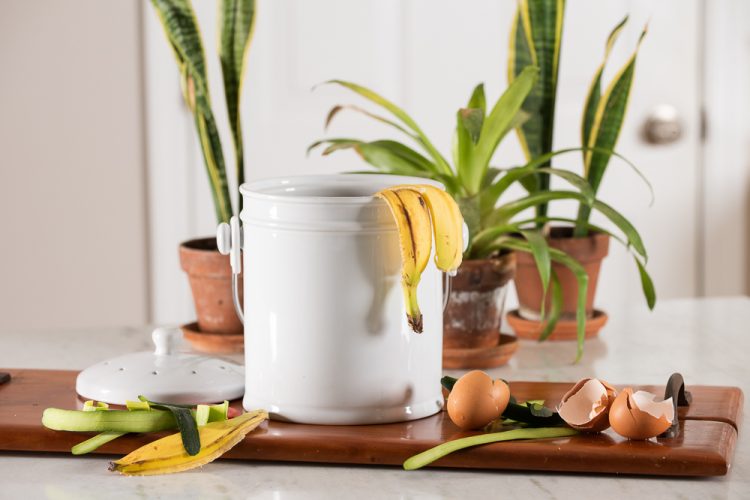
This post contains affiliate links.
Disclosure: I do not own a Mill bin. However, I have been in contact with the company to learn more about Mill and answer some of my questions about the product and the service.
What is a Mill kitchen bin subscription?
Mill is a company that provides a subscription service to divert your food waste away from landfills. While the company appropriately calls its product a kitchen bin (combined with a subscription service to send your food grounds to farmers), you might recognize the product as an electric kitchen composter or electric composting alternative.
In short, you pay a monthly subscription fee to lease their kitchen bin, which is effectively a small trash can with a dehydrator and grinder inside, and the option to send your food grounds through the mail to be processed into chicken feed.
So it’s a subscription? Or a product?
The Mill kitchen bin subscription includes the use of its product and a service to collect food scraps via mail. You must return the bin if you cancel the subscription, and they are working on solutions for the bin’s end of life to reduce the waste of the machines after being returned.
The company is correct to use the terms kitchen bin and food grounds, respectively, to describe the device and the output. Similar companies use words more aligned with composting activities, but none of these machines really compost food scraps in the true sense of breaking down the food waste to its nutrient elements that can feed the microbes in the soil. But in essence, this Mill kitchen bin subscription service acts as a “composting-by-mail” service.
Why sell a subscription and not a product?
I assume the idea is well-intentioned. They saw products like the Lomi and the FoodCycler and realized that they don’t work for many people, if for no other reason than most people can’t actually use the output from similar electric composters. The volume of food grounds is just too high to be fully utilized by someone without a sizable garden. I’ve laid out this argument in the past as one reason not to buy an electric composter.
Incorporating the shipment element into the Mill kitchen bin subscription theoretically solves this problem. People who don’t use the food grounds send them to be processed into chicken feed to close the nutrient loop of our food waste. I’ve shared more below about why I’m dubious about putting our dehydrated food remnants in the mail.
Beyond the over-engineered solution, I suspect that the subscription element also appeals to the founders and investors of the company. Subscription revenue is recurring, and it’s something many people often set and forget. So in this case, lots of people would likely sign up for the subscription, get the machine, and send in far fewer food grounds than are accounted for in the monthly cost. This is a windfall for investors (and a money pit for well-intentioned customers).
But why send food scraps?
I’ve already explored why I don’t think electric composters or their kitchen bin equivalents will resolve our food waste problems and six reasons not to buy electric composters. The production, transportation, and energy use as well as the cost and individual effort just don’t make sense as a good, scalable solution for food waste. While it might be a feasible solution for a select few, there are better options in nearly all circumstances.
Related Reading: Top 5 Easiest Ways To Compost At Home
The Mill membership goes beyond my general criticism of electric food waste processors by adding a carbon footprint to send food scraps around the country. This is just ridiculous. They’ve essentially argued that mail trucks are already on the road, so sending our dehydrated, ground-up food via mail trucks is de minimus. But this is just wrong.
When we add more packages and more weight to a load of goods being transported around the country, it requires more energy to move those products. What if every company said their product had no carbon footprint from shipping to customers because those trucks that carried their products were already on the road? That’s just silly.
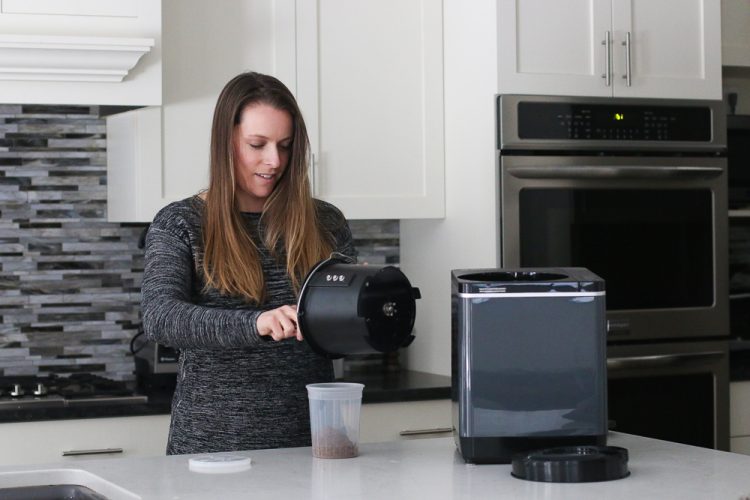
There are many better composting options for individuals
The company claims that a Mill membership is a better environmental alternative to sending food scraps to landfills. That’s probably true. But even if they have done a rigorous analysis (the company sent me their life-cycle assessment), that doesn’t mean it’s a good option. Being a ‘less bad’ alternative doesn’t make it a good one.
EPA’s Food Waste Scale
Mill markets that the bin/program diverts the food scraps to animal feed, which is higher on the EPA’s Food Waste Scale than compost. Technically, that’s true. For example, it’s fair to assume that feeding restaurant food scraps to pigs at a local farm is better than turning it into compost. But just like most concepts in life, things are more complex than a simple diagram.
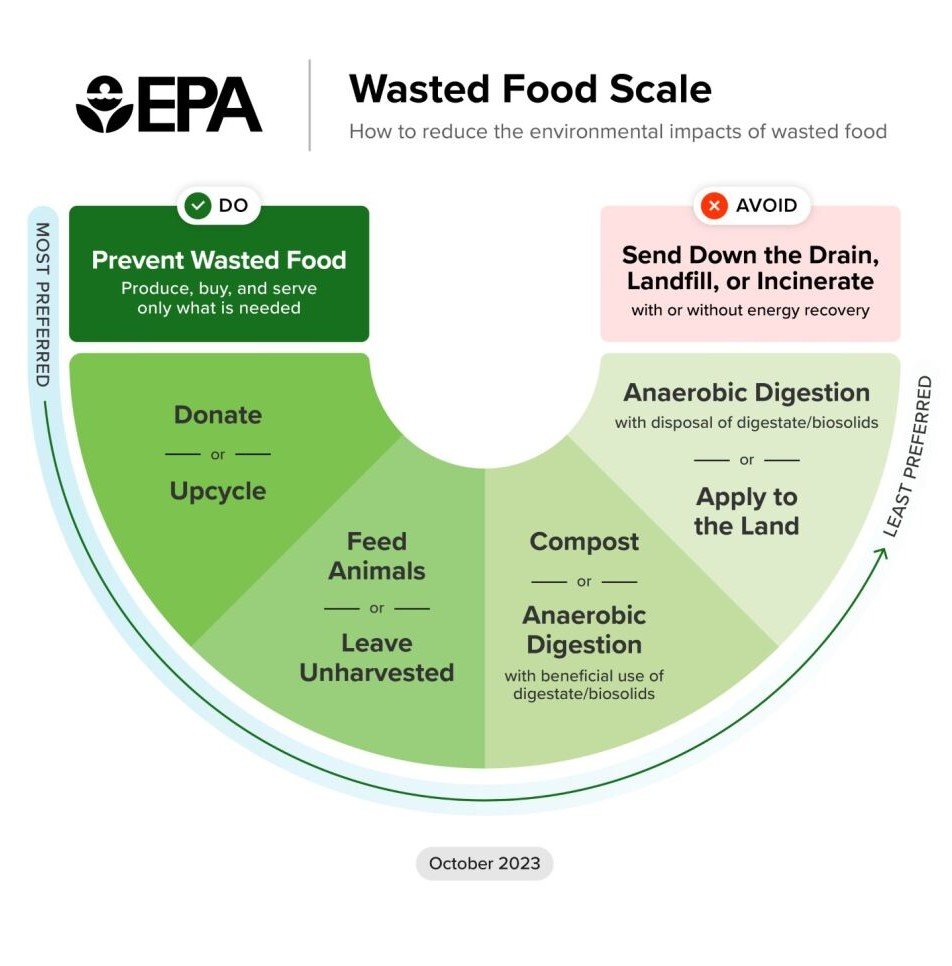
I’m guessing the EPA assumes that food waste goes straight to animals, not through a processing machine to be dehydrated, transported hundreds or thousands of miles, through another industrial process, and then finally to chickens. Certainly, that’s not a better use of my food scraps than putting them in my compost bin or dropping them in a bucket to be picked up by my local composting service.
Don’t get me wrong; I’m not suggesting everyone should compost like I do or these systems are available to everyone. I’m just saying that there are often nuances to consider. Ignoring the transportation and extensive processing related to the Mill program when thinking about where solutions fall on the Food Waste Scale would not reflect a good faith analysis.
None of these machines are as plug-and-play as they seem
I’ve used the FoodCycler and the Lomi. While the Mill kitchen bin is larger than those appliances, all these kitchen food waste bins still demand more work than they market to manage the volume. The owner needs to:
- regularly empty the machine (less often for the Mill than the other alternatives)
- clean out the grinder (which is often not a fun job)
- do something with the dried food grounds (other electric food dehydrators)
- package up the food grounds, request pick up from the post office, and set the package out for collection regularly (Mill only)
All these machines get jammed from time to time. Mill says you can use the bin to process very tough materials like chicken bones, avocado pits, and beef bones smaller than the width of a thumb.
In my discussions with the company, the representative said:
“We know jams are caused primarily by a few things:
- Putting something in the bin that is not allowed (like large beef bones or corn husks); we have a Food Library on the app that is continually updated and customers can search about what is OK/not OK to add
- Long, fibrous stuff (like celery stalks). We recommend chopping them up first.
- Lots of sugary stuff, like large amounts of fruit on top of a bed of fluffy food grounds.
- Letting the bucket get too full. If starting from a pretty full bucket, we recommend emptying before if you know you’re going to have a large volume of scraps (e.g., prepping a big meal or hosting a party)”
For some people, this will still be easier than a more traditional composting or compost pick-up service method. But just understand it takes work to manage the system – knowing which scraps can go in the bin, which items need to be chopped up, if there’s too much sugar in the bin, making sure your kids don’t throw non-food items in the bin, etc… Much like managing a compost bucket, this becomes second nature over time. But it’s not the same as mindlessly tossing everything in the trash.
I’m sure a handful of people will find the Mill kitchen bin subscription to be a perfect solution for them. I’m not here to dispute those perspectives. But far more people will sign up for the subscription and realize it’s not a great fit, it is more tedious to manage than they’d hoped, and probably keep paying for it for a while anyway (because subscription inertia is real). I hope I can help deter many of those people from wasting their money on an expensive “solution.”
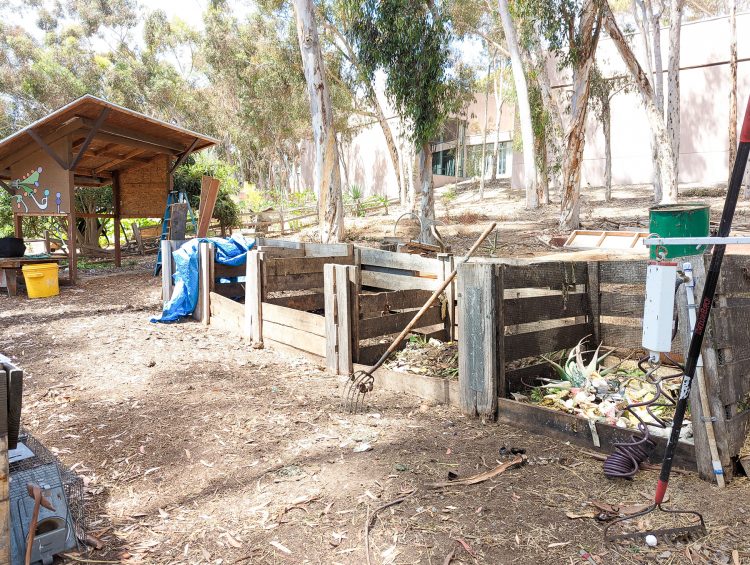
Food Waste is a Global Solution to Be Manager Locally
Many of our climate dilemmas are large-scale problems with large-scale solutions that require significant funding, but the diversion of household food waste is not one of them. We are best off developing local programs based on unique local circumstances that keep food scraps in local communities to be used by local farmers and benefit local soil. There is simply no reason to transport household food waste around the country when we can create myriad community solutions that are better for the planet and the communities in which they operate.
Mill reiterates the importance of returning food nutrients back to the food cycle, in this case by feeding chickens that become food for humans. This is true; closing the nutrient food cycle is important.
But those nutrients don’t need to be shipped thousands of miles to a processing plant, where they will require energy and machinery to be turned into chicken feed, and then shipped hundreds or thousands more miles to get to chicken farms. This is an over-engineered solution that creates new problems in an attempt to solve existing ones (while simultaneously skimming off a nice profit margin for the investors, if it scales).
If we’re going to spend the money, why not invest in simpler solutions, like transporting that food waste to local chicken farmers? Household food waste should be handled by solutions like compost pickup services (which could be municipal or private), local drop-off programs, and networks like ShareWaste where people can connect with neighbors to utilize community compost bins.
There are many other composting methods and system designs. I listed just a few examples. In all of these cases, however, the nutrients from food scraps benefit local soil and ecosystems, create local jobs, and keep profits local.
Eventually a more local solution?
When I spoke to the Mill representative, she mentioned that the long-term goal is to have more regional processing plants as the company matures, so food scraps aren’t sent so far away. This is better…
Alternatively, they can partner with municipalities or compost pick-up services (for example) to offer the Mill to their customers or residents, in theory, to get more people to buy into composting and also to make transportation of food scraps easier (because they are drier and lighter after processing).
That is true. But I just feel like it’s an extra step that costs so much money and just doesn’t provide a great return on value. Is it better to have your food waste dehydrated? Sure. But is that much better? Not really. In other words, it’s not making enough of a difference to warrant such a high cost for each household (unless you have enough disposable income that it’s a fun toy to have around the kitchen).
Subscription Revenue and Personal Data are Most Valuable
Investors have put massive money behind Mill. I am not privy to the private details (and I don’t pay for pricey subscriptions to the databases that curate this type of information), but we know they got $100 million in Series C financing alone from a variety of venture investors. Series C means they already have additional funding in prior rounds from at least a Seed Round, a Series A, and Series B, so we can assume they have well over $100 million invested in this endeavor.
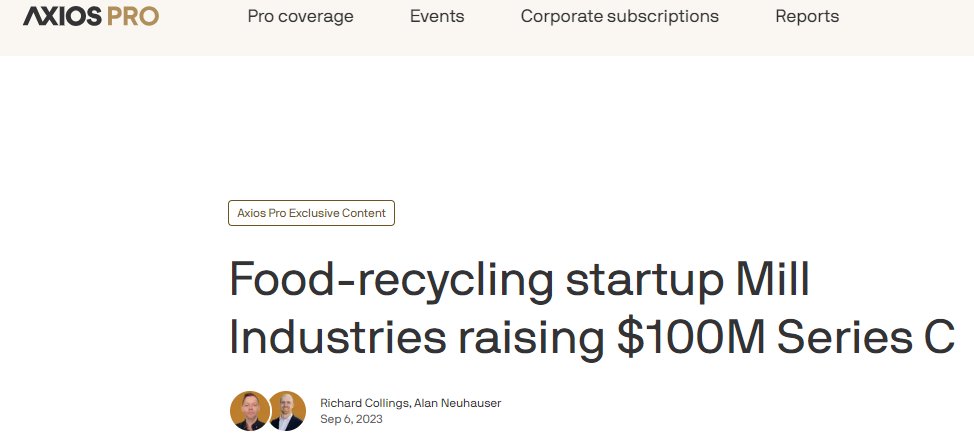
Do you know how many bins they need to sell to recoup that investment AND provide a 20-30% return to investors (which is sort of the expectation for investments like this)? Let’s say they make a profit of $200 per bin (I’m just guessing). They would need to sell half a million bins just to recoup the $100 million Series C funding, ignoring any previous rounds of funding.

Lomi, a competitor product, has sold 165,000 bins (according to their website as of November 2023) in the several years since launching. Knowing that many people who already have a Lomi don’t need a Mill (and it’s the same target market), 500,000 doesn’t seem like a slam-dunk outcome. Maybe I’m wrong.
But I suspect that Mill cares less about you buying the bin and more about the bin being a means to your subscription revenue and personal data. You never thought your trash can needed an app… until someone convinced you it did because they want your personal data. Silicon Valley knows that your subscription revenue (which customers collectively will pay for more than they use) and your personal data are way more valuable than actually selling you the product.
Household Food Waste Disposal is not a Venture Capital Problem
Mill advertises that their company is a product of people from companies like Apple, Nest, and Uber, massive Silicon Valley gems, as if these experiences at tech giants will qualify them to be leaders in the food waste management space. But these are very different problems with wildly different solutions.
Unlike those big tech products and services, the solutions that make the most sense for addressing household food waste are usually not scalable and don’t sustain sufficient profit margins for venture capital investors to skim a healthy 20-30% profit off the top of income to pay investors.
Venture capital serves great purposes (sometimes), but I just don’t think household food waste is its best investment. The best solutions are inexpensive and unique to their communities, and these types of decentralized, distinct solutions are not typically attractive to investment funds. Can you imagine what local businesses in the food waste space could do with $100 million?!
To be sure, I don’t think venture capital investment is always bad. Some things need huge upfront capital investments that carry a lot of risks and consequently demand high returns to reward the risk investors are taking.
Projects and problems with high-risk, capital-intensive, long-horizon solutions like novel software, certain medical advancements, and major overhauls in our transportation system (just as examples) benefit from venture capital funding. These investors with deep pockets and the flexibility to take financial risks make sense.
Food waste, however, particularly at the individual level, does not seem to be one of these problems. It’s a local problem that requires local, dynamic, and unique solutions, many of which are not capital-intensive, particularly relative to the levels of capital venture firms can and do invest.
I’m not necessarily out to trash the people who started Mill. I don’t know them, and I assume there are good intentions behind the product and service. But I do hope to prevent unsuspecting do-gooders from wasting money on greenwashed garbage that doesn’t actually solve anything.
The founders of Mill are well-connected in Silicon Valley (at least one of their founders started Nest). They certainly know the lucrative benefits to investors of personal data and subscription models, especially those not fully utilized by their customers. Many Mill customers would likely not make the most of their subscription, given the consistent effort required to process the food waste, ship the dehydrated food scraps, and send back the appliance when they’re ready to cancel.
Better Food Waste Solutions Than Expensive Technology
To solve our food waste problems, specifically those at the individual level we need (among other things):
- More favorable regulations around community composting. Food waste is often treated the same as solid municipal waste so it can be burdened by restrictions similar to running a landfill. This makes community composting more expensive than necessary.
- More local funding for solutions that benefit everyone, not just the select few who can afford an extra $33 per month and the regular activity of boxing up and shipping food scraps.
- Micro grants and low-interest loans for local businesses to start up whatever type of solution works for their community. And this looks different in different neighborhoods.
Notice that none of these are “good financial investments” that will pad the bank accounts of venture capital investors.
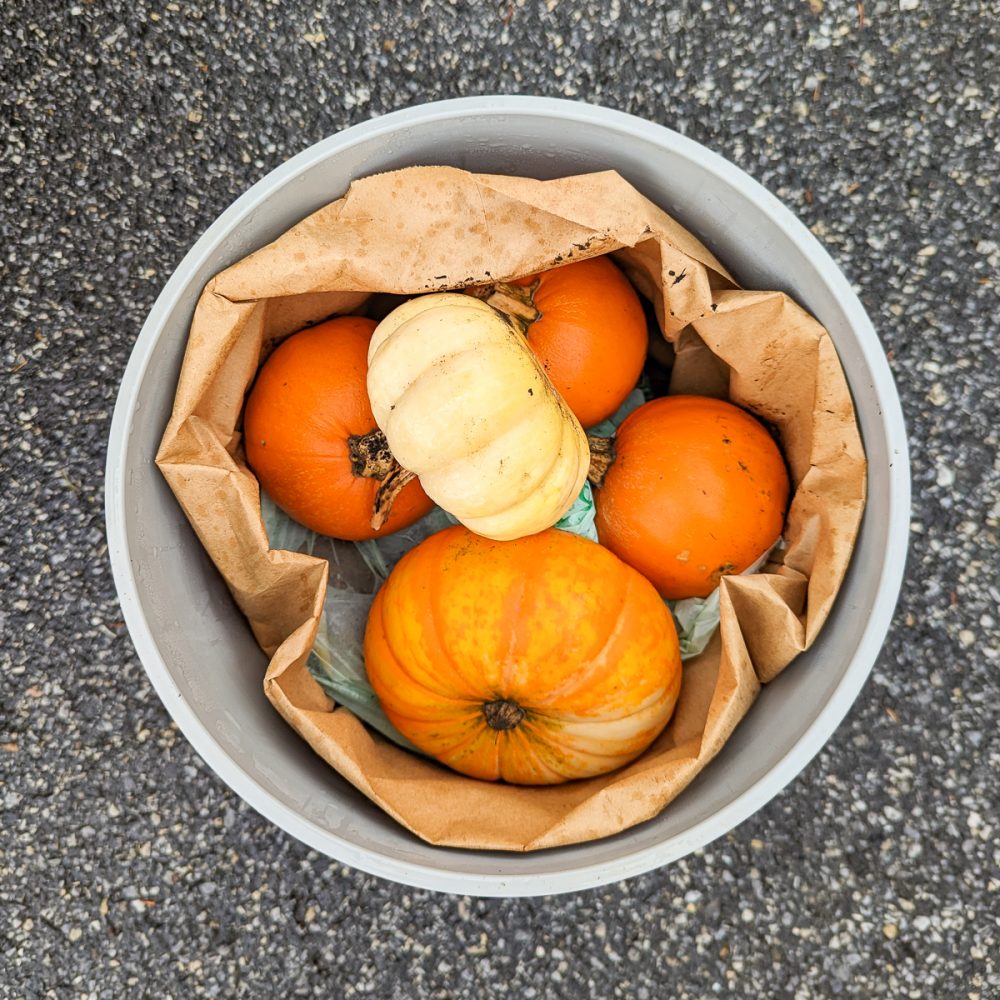
Composting Alternatives to Mill for Household Composters
The Mill membership is just another burden on individuals to do the work of processing, packaging, and shipping their food scraps. We know this type of system is entirely impractical at a large scale. If you’re looking for some alternative composting options to Mill or other electric composters, here are some at-home composting options to consider:
Feed Neighborhood Chickens | If you want to use your food scraps to feed chickens, find a neighbor who has chickens and give them your food scraps. It’s a growing hobby, even in urban areas. You might be surprised who has chickens.
Support a Local Farm | Consider bringing your food scraps to a local farm. Create a collection point at a local farmer’s market and drop your scraps there. Most farmers’ markets have at least one poultry farmer. Ask them if they want your food scraps or your food grinds.
Sign Up for a Pick-Up Service | If it’s available to you and in your budget (it’s almost certainly less expensive than a Mill membership), consider signing up for a pickup service. You’re lucky if your municipality offers such a service, but there are many private companies doing this in most urban and suburban areas if you’re interested.
And if you’re worried about your food scraps causing your kitchen to stink because you don’t have a machine to dehydrate and grind them up each day, stinky food scraps are a myth if you manage them properly.
No one leaves their trash in their trash can for a week or two and wonders why it starts to smell or attract flies. So why are we surprised if food scraps get gross if we leave them in a kitchen bin for a week? We know that part of being an adult is taking out the trash (or the food scraps, as the case may be) if we want to live in a home that isn’t filthy. There are lots of ways to store food scraps for composting (that won’t leave you with a smelly kitchen) depending on your lifestyle and living circumstances.
Drop Scraps at a Community Collection Site | Some municipalities and farmer’s markets have collection sites where you can drop your food scraps for collection during their operational hours. Learn more about how to get started using a food scrap drop-off site for more details.
Find a Composting Neighbor Through ShareWaste | ShareWaste is a free app that connects composters to people looking to find a place to drop their scraps. I have a compost tumbler where I allow people to bring their food scraps, and I process them in my own bins. If you can’t compost at home, download the app to see if there is someone in your area who might accept your food scraps for free.
Compost Using a Closed Outdoor Bin | If you’re looking into Mill, I’m guessing you’re not looking to manage an outdoor bin on your own. But if it’s an option, Soil Saver is my favorite outdoor compost bin. I love that it has locks to keep out wildlife, it’s durable and easy to use, and it processes pretty quickly.
No Composting Alternatives Available?
There are lots of ways to compost at home. The ones I mentioned above are some of the easier, least cumbersome options. I suspect most people considering the Mill aren’t willing to do things like bury their food scraps in holes in their yard or manage a messy tumbler year-round (some of the more complicated options I didn’t mention above).
If none of the easier composting options listed above work for you, it might be an indication that you live in an area with poor composting systems and infrastructure. Unfortunately, that’s all too common in many places, including in the United States. It’s one of the reasons food waste is one of the largest environmental issues we’re facing right now.
That may mean that advocacy for better composting systems and more composting infrastructure is the best use of your time and resources for now. I know that’s frustrating to hear for many people, especially when one really wants to divert their own food waste. It can feel overwhelming to think about trying to change the larger community problem. But sometimes it’s the only avenue for the time being. If that’s the case for you, consider some of these alternatives to composting at home:
Donate to an Environmental Organization | If none of these options feel accessible to you and you’d still like to contribute $33 a month to an environmental solution related to food waste, then donate $33 per month to an organization that works towards community composting solutions in your area.
Lobby for Local Composting Options | The Institute for Local Self-Reliance has a bunch of information on advancing community composting. You could also work with local government, support plastic-free lobbying groups, composting lobbying groups, etc… to financially support initiatives that make composting more accessible to broader groups of people.
Start Your Own Composting Company | This is a little intense, but if you have the time, you could consider starting your own compost collection or pick-up service. A couple of years ago, without composting available in my community, I started WasteWell. I knew I couldn’t solve the composting issue for everyone in my community, but maybe I could help some people. I know not everyone can do this, but it’s an option if you have the interest and it’s available to you.
Focus on Reducing Food Waste | And more simply, consider expending the energy you would otherwise put towards using your electric composter instead working to reduce the amount of food waste you generate in the first place. Reducing the amount of food you waste won’t make anyone rich, which is precisely why no one is paying to show you ads to promote this on social media. But it will likely save you money instead of costing you.
As an aside, preventing food waste in the first place is really a bigger problem. We are so detached from our food supply and focused on convenience over all else that we really need to think about how to make better use of the food we already have. We need to consume more intentionally and stop buying so much sh*t, especially when it’s just a band-aid to make us feel better about our bad habits. But that’s a whole separate can of worms (no pun intended for all the worm-composting fans out there).
Mill looks like a well-intentioned, over-engineered non-solution
Mill might be marginally different than Lomi or FoodCycler or many other kitchen food waste appliances, but it’s basically the same thing. Can we please stop iterating on residential electric composters, or whatever other jargon the company wants to use for a machine that dehydrates and grinds up food waste? And furthermore, let’s stop iterating on them in ways that just make them more expensive so investors can take an increasingly larger cut off the top.
From their website, it’s clear the founders of Mill did their research on other similar products and looked to fix some of the obstacles similar kitchen compost solutions face.
- They recognized the fact that the output of those machines is difficult to use.
- They acknowledge the life-cycle challenges of these machines and that we need to consider what happens next when a customer no longer wants to use them.
- They did a study on carbon analysis to address the carbon emissions from energy use and transportation related to the use of the machine and shipment of the food grounds, respectively.
But they are still iterating on a proposed solution that just doesn’t make much sense. And in my opinion, they’re looking for a solution in the wrong place. They’ve applied a “tech lens” to a challenge that simply isn’t best served by fancy technology with green-colored, Earth-friendly branding. Not everything is best solved by expensive Silicon Valley research and development.
But don’t we need lots of solutions? Yes, but…
Food waste is a massive problem, and we definitely need a ton of different solutions to address the problem. I totally agree that we need to work to solve the problems from many angles – reduce food waste, use food waste as animal feed, compost, etc… And all of those categories have a plethora of solutions we should analyze.
But we also only have a limited amount of money to throw at these problems. Can you imagine what a collective of grassroots food recovery organizations or local curbside composting companies could do with $100 million?! We need to put all this well-intentioned climate money to work doing the very best we can with it (and the best returns on investment in terms of actual progress probably won’t often include a 20% cut to passive investors). We need to think about not only what solutions have an impact, but which solutions have the biggest impact for the lowest cost.
Think about how many food-insecure people we could feed and how many jobs we could create if we invested over $100 million in more companies that hired drivers to rescue food from local restaurants and grocery stores to deliver it to food pantries. Some of these companies already exist, but imagine if we made it a bigger priority.
I wonder what impact a $100 million educational campaign in food waste prevention at the household level would make if we asked families to really prioritize eating leftovers, enjoy ugly produce, better understand expiration dates, and buy food more intentionally (i.e. buy less stuff that goes bad in the back of the fridge when we forget about it) before investing in fancy tech gear.
If you think buying a Mill bin would be fun and you believe sending your food scraps across the country makes sense, do your thing. Most people are never going to be able to afford this, even if they get municipal subsidies. But I wish we would stop looking for tech-heavy, quick-fix solutions that don’t actually address the underlying root causes of a culture that consistently overconsumes at every corner.
This is holistically just the wrong type of solution to our very real food waste dilemma burdening communities on the planet. Sigh…
If you like this post, you might also like:
5 Tips to Reduce Food Waste at Home
Carrot Greens Recipe: Easy Vegetarian Enchiladas

Jen Panaro
Jen Panaro, founder and editor-in-chief of Honestly Modern, is a self-proclaimed composting nerd and advocate for sustainable living for modern families. To find her latest work, subscribe to her newsletter, Stepping Stones.
In her spare time, she’s a serial library book borrower, a messy gardener, and a mom of two boys who spends a lot of time in hockey rinks and on baseball fields.
You can find more of her work at Raising Global Kidizens, an online space to help parents and caregivers raise the next generation of responsible global citizens.



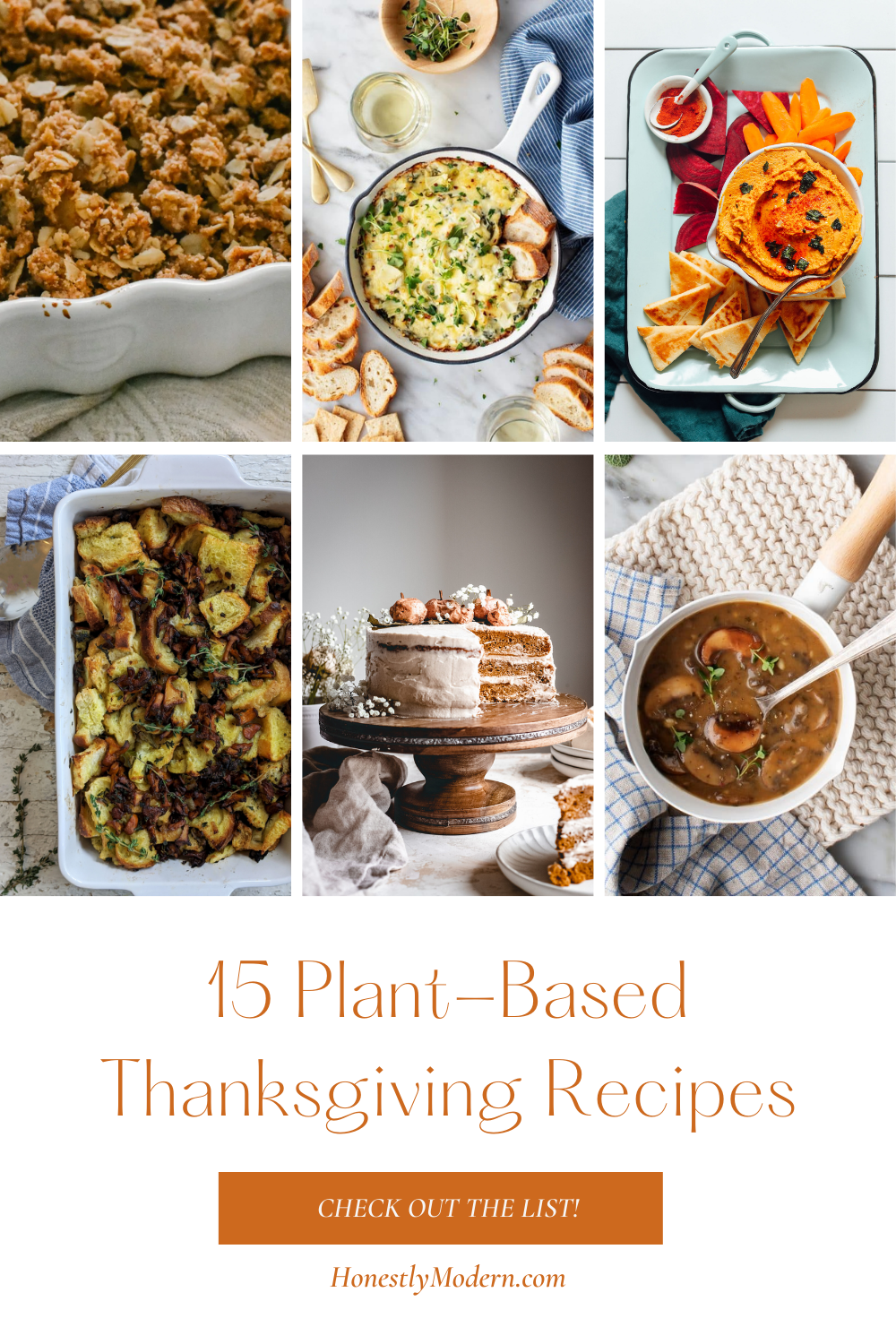


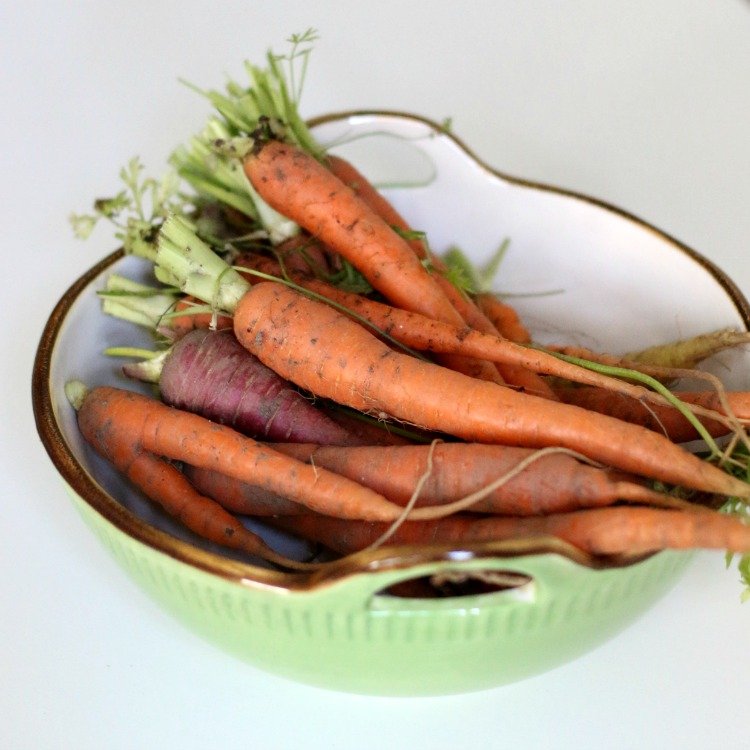

I have and love the Mill. It is ridiculously easy to use (monthly emptying, easy to do) and I think that anyone considering the carbon footprint implications should to the site and read for themselves. This article is extremely skewed.
Thanks for sharing your experience. Glad it’s working for you.
You don’t actually list any helpful alternatives for someone who lives in a place that’s too urban (or too HOA’d up) for personal compost but not urban enough for a compost service. It feels like you’re pushing for only perfect solutions rather than small steps that add up to big things.
I came to this post, ready to be pointed to some other in-home option that would make it possible for my clients to go from not composting at all to composting in a basic way without devoting brain-power and energy they don’t have to spare to the issue. It just feels like you want to trash every option except the super-pure compost experience. And yeah, my personal compost system takes almost no work from me…once it’s out in the bin. But I have to maintain the process on the daily. Getting it from board to bin is work and effort and habit and practice. As a lot of zero waste folx say, 100 people doing sustainable things imperfectly is far better than 1 person doing it perfectly.
Hi Suzanne – I’m sorry you feel like we’re expecting perfection. That’s not the case at all. I don’t think perfection is realistic for any of us nor should it be expected without significant systematic changes. A few thoughts: 1) It will entirely depend on one’s alternatives, but throwing food scraps in the trash might be better than using Mill. To me, it’s a very greenwashed option when compared to so many alternatives. 2) You’re correct that we can’t put everything about composting in one article or even good information about all the alternatives in one article. We can try to add a bit more information to this post in the future, but for now, you might consider checking out our resource guide all about composting – https://www.honestlymodern.com/composting/ — We have over 100 articles about all sorts of ways to compost, things to consider, some of the ways we think are easiest to use at home, information sorted by type of composting, and so much more. Hopefully that is helpful.
I found this article to be highly thoughtful. While it is unfortunate that, as another commenter pointed out, many of the alternatives that the writer lists are difficult for most and impossible for some, that’s nobody’s fault. It could just be the nature of this very challenging problem all of us in this community are striving to address. Jen claims outright in this article to be the founder of a local, traditional composting company, so it should not be a surprise that she thinks “Household Food Waste Disposal is not a Venture Capital Problem.” But does that make her wrong? At the very least, isn’t it an opinion worth considering as part of a conversation worth having? I hope Mill and services like it do turn out to be viable solutions, and I’m glad some are finding them helpful already. But it does seem like a possibility that they are expensive products with minimal or even negative impact, so I also hope we continue to have an honest discourse about these things. It’s clear to me that Jen did, in fact, go to the site and read for herself what this company provides, so this site seems like an earnest and important part of that discourse.
Thanks for this note. I really appreciate it.
I agree, and I”m glad I stopped by to read this. I received an offer from Thrive Market for a $50 credit if I get a Mill. My first question is why are we feeding random scraps to chickens? And everyone’s scraps are different. I don’t think I’d want chickens eating highly processed scraps – left over poptarts, frozen pizza, bleached flour crackers, etc. Chickens should be pasture raised. This is not an easy problem to solve, and I’ve been so tempted to get a Lomi or Mill or other products over the years. They all seem to be less bad options, but when I think of the ultimate kibble being fed to chickens….it just seems like we’re spending an awful lot of time and money that will make a group of investors a lot of money as they ride the wave of keeping food out of landscapes. But we should know by now that quick fix solutions often have just as bad unintended consequences. Thanks again for your post!
I agree with all of this. Thank you for your thoughtful response. 🙂
*landfills